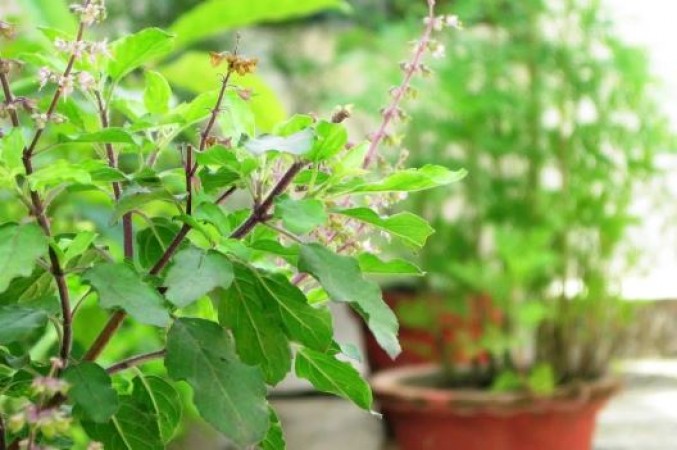
Tulsi, also known as the "Queen of Herbs," is revered in Sanatan Dharma for its profound spiritual significance and medicinal properties. This sacred plant is commonly found in the courtyards of homes across India, where it is regularly worshipped. Tulsi is not only a symbol of devotion but also plays a vital role in the spiritual and everyday lives of many.
Spiritual Significance
In Hindu culture, Tulsi is considered a manifestation of the goddess Lakshmi and is associated with purity and protection. Its leaves are often used in religious rituals and offerings, believed to purify the surroundings and bring blessings to the household. Regularly watering and caring for a Tulsi plant is seen as an act of devotion, and neglecting it can be viewed as a sign of impending troubles.
Common Causes of Wilting
Despite the reverence surrounding it, many people encounter issues with their Tulsi plants. Common reasons for wilting include:
Overwatering or Underwatering: Striking the right balance is crucial. Too much water can lead to root rot, while insufficient water can cause dehydration.
Improper Lighting: Tulsi thrives in bright sunlight. Insufficient light can stunt its growth, whereas too much direct sunlight may scorch its leaves.
Pest Infestation: Aphids, whiteflies, and other pests can attack the plant, leading to wilting and discoloration.
Nutrient Deficiencies: Poor soil quality lacking essential nutrients can impede the plant's growth.
Remedies for Reviving a Dying Tulsi Plant
If your Tulsi plant is wilting, here are effective remedies to help it recover:
Natural Fertilizer: Create a nutrient-rich mix using dried cow dung and neem leaves. Grind both into a fine powder and mix them. Incorporate this into the soil to provide essential nutrients, promoting healthy growth.
Proper Watering Techniques: Water the plant only when the top inch of the soil is dry. This prevents both overwatering and underwatering. During the rainy season, be particularly cautious to avoid waterlogging.
Optimal Light Conditions: Ensure your Tulsi plant receives at least 4-6 hours of sunlight daily. If indoors, consider placing it near a window where it can get ample light.
Regular Pruning: Trim the plant weekly to remove dead leaves and encourage new growth. This also helps in preventing pest infestations by improving air circulation.
Pest Control: If you notice pests, treat the plant with a mild soap solution (a few drops of dishwashing liquid mixed with water). Spray this solution on the affected areas to eliminate pests without harming the plant.
Additional Tips for Tulsi Care
Soil Quality: Use well-draining soil rich in organic matter. Consider adding compost to enhance soil fertility.
Seasonal Care: During extreme weather conditions, provide shade or protection to the plant to prevent stress.
Companion Planting: Planting Tulsi alongside other herbs can help deter pests and enhance growth through mutual benefits.
By implementing these care strategies, you can ensure your Tulsi plant remains healthy and vibrant, continuing to bring blessings and positivity to your home.
Keep These Essentials with You While Going on Kanwar Yatra
If you see these things in your dreams, understand that wealth is about to arrive
Why Shouldn't You Eat Kadhi in Saawan? Discover the Religious and Scientific Reasons Here